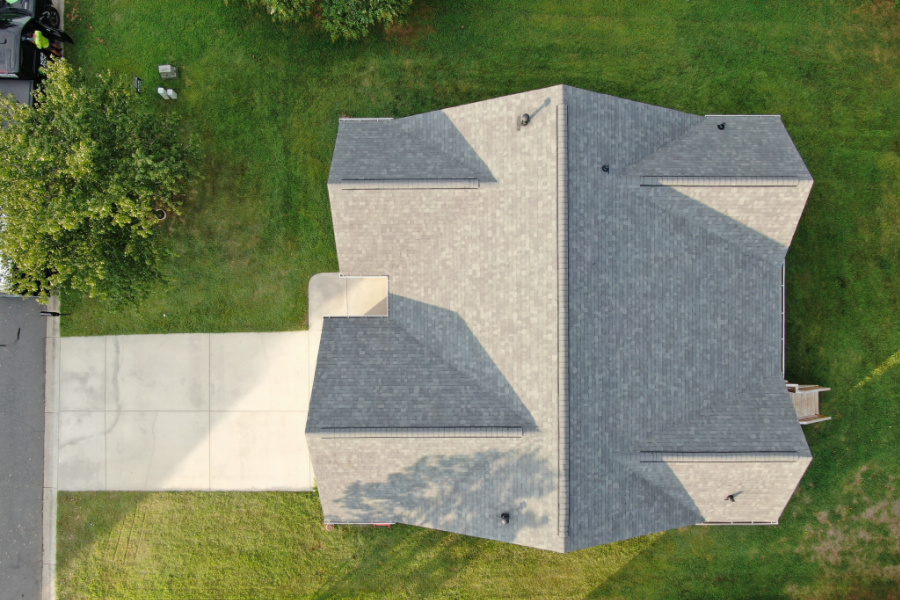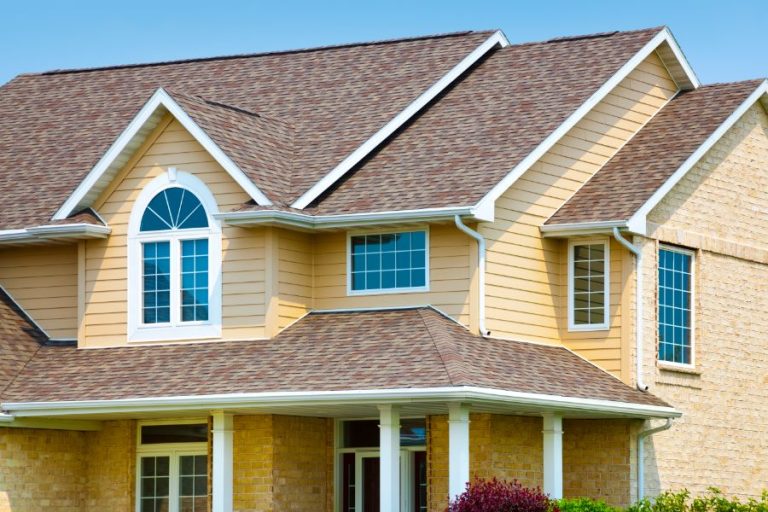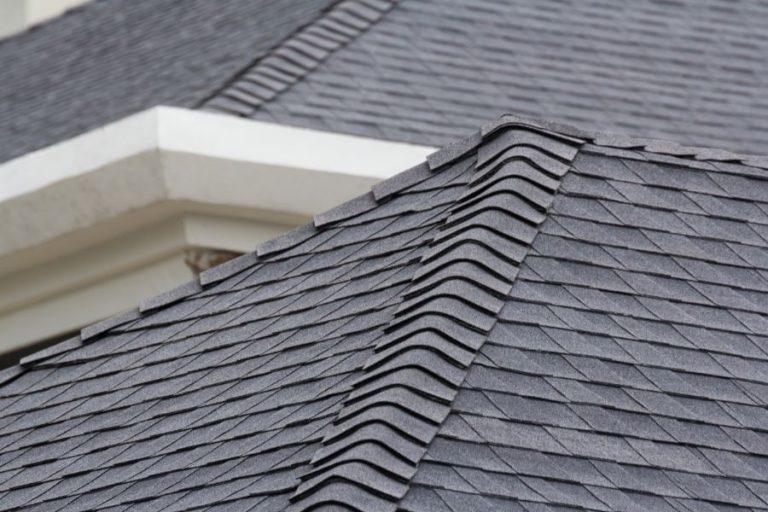How to Prepare Your Roof for Fall: Essential Tips for Homeowners
To prepare your roof for fall, give it a good once-over. Look for damaged or missing shingles that could let in water, and make sure your gutters and downspouts are functioning and free of debris. Trim any overhanging tree branches to prevent roof damage from falling leaves, and inspect your attic insulation for any wear or gaps that could let cold air in. Check around skylights for leaks or discoloration too. Ensuring your roof’s readiness for fall might feel like a huge task, but rest easy – the details you’ll discover in what follows will make the process a breeze.
Visually Check for Damaged or Missing Shingles
As you gear up for fall, one of the first things on your checklist should be to visually inspect your roof for damaged or missing shingles. These pesky issues can lead to water leaks and structural damage if not addressed promptly. So, take a stroll around your property, looking up at your roof from various angles.
Keep an eye out for shingles that are curling, cracking, or warping. These signs indicate potential weathering or aging. If you spot any loose or displaced shingles, don’t delay in sorting them out. You’re not just fixing a shingle; you’re taking action to protect your home and everyone in it.
Make sure Gutters and Downspouts are functioning
Next up on your fall preparation list should be checking that your gutters and downspouts are in good working order. These often-overlooked aspects of your roof play an important role in preventing water damage to your home. They guide rainwater from your roof and safely away from your foundation. If they’re not functioning correctly, you’re opening the door to potential problems.
Start by cleaning your gutters. Over time, they can fill up with leaves, dirt, and other debris, blocking the path for water. Make it a habit to check for rust, holes, or sagging, which can hinder proper drainage. Don’t forget your downspouts. A clogged downspout can lead to moisture damage under your shingles.
If you’re tired of constantly cleaning your gutters, consider installing gutter guards. These can help prevent leaf accumulation and maintain effective water flow. Remember, your goal is to make sure that water moves away from your home, not towards it.
Proper gutter maintenance is essential to protect your roof and your home’s foundation. It’s not just about keeping your home looking great—it’s about preserving its structural integrity. So, let’s make sure those gutters and downspouts are ready for fall!
Trim Overhanging Tree Branches
Often, homeowners overlook the potential damage that overhanging tree branches can cause to their roofs. Consider this: During a fall storm, those branches can act like an abrasive wire brush, scraping and breaking your precious shingles. The result? Unnecessary, costly roof damage that could have been prevented.
So, what’s the solution? Trim back branches. It’s that simple. By taking the time to cut back any tree branches that hang over your roof, you’re not only preventing damage to your shingles, but you’re also reducing the risk of gutter clogs. Remember, leaves and small branches that fall from overhanging trees can accumulate in your gutters, hampering water flow and leading to potential problems.
But that’s not all. Leaves from those overhanging branches can also lead to mold growth on your roof if they’re not addressed. This alone is a compelling reason to keep those branches trimmed back.
Moreover, professional branch trimming can safeguard your roof from damage and prolong its lifespan. Regular maintenance of overhanging branches is a proactive measure that protects your roof from potential hazards and costly repairs. Be smart about fall roof preparation – trim those branches back. You’ll thank yourself later.
Check Your Attic Insulation
While it’s wise to keep those branches trimmed, don’t overlook the significance of checking your attic insulation. Your home’s energy efficiency heavily relies on it. As the seasons shift, the insulation in your attic plays a vital role in maintaining a comfortable indoor temperature and preventing heat loss.
- Assess your attic insulation’s condition. Look for any gaps, compressions, or signs of wear that may diminish its effectiveness. This can result in increased energy bills and a less comfortable home environment.
- Stay vigilant of ice dams and moisture buildup. These can occur if your attic insulation isn’t up to standard, potentially causing notable damage to your roof.
- Ponder upgrading your attic insulation. If your current insulation doesn’t meet the recommended R-value for your region, upgrading before fall can greatly enhance your home’s energy efficiency and safeguard your roof.
Inadequate insulation doesn’t just lead to a chilly house and high energy bills; it can also cause significant roof problems. So, as part of your fall roof preparation, give your attic insulation the attention it deserves. You’ll not only protect your roof, but you’ll also make your home a more comfortable place to live this fall and winter.
Look for leaks or discoloration around Skylights
Turn your attention up to your skylights. These natural light sources are a beautiful addition to any home, but they can become problematic if not properly maintained. It’s pivotal to look for any signs of leaks or discoloration that could spell trouble for your roof this fall.
Begin by examining the area around your skylights for water stains or discoloration. These are telltale signs of leaks. If you spot any, it’s an indication that water might be seeping through, damaging not only your roof but potentially the interior of your home too.
Also, inspect the seals and flashing around the skylights. These areas are prone to wear and tear and could be the source of leaks if they’re damaged or worn out. Keep an eye out for any cracks or gaps in the skylight frame too. These tiny openings can allow water to infiltrate, causing further damage.
Make sure to address any issues with your skylights promptly. Properly sealing them and ensuring the flashing is in good condition can help maintain the integrity of your roof during fall weather. Remember, early detection and action can save you from major repairs down the line.
Schedule Maintenance For Your Chimneys and Vents
As the leaves start to fall, it’s essential to turn your focus towards your chimneys and vents. It’s more than just a to-do item on your autumn checklist; it’s about ensuring safety, efficiency, and peace of mind throughout the colder months.
To get a head start, make sure to schedule maintenance. Regular upkeep not only helps prevent water infiltration and improves overall ventilation but also enhances the performance of your home’s heating system. This way, you can cozy up by the fire without a worry in the world.
Now, let’s break it down:
- Inspect your chimneys and vents thoroughly for any blockages. Over time, debris such as leaves, twigs, or even nests can accumulate, hindering the airflow and posing a risk of fire.
- Check for damage. Cracks or broken parts can lead to leaks and inefficiencies, increasing your heating costs and potentially causing more significant issues down the line.
- Clear any debris. It’s not just about inside the chimney or vents; debris on the outside can also lead to blockages and damage.

Get A Professional Roof Inspection
Before the first leaf hits the ground, it’s a smart move to get a professional roof inspection. This isn’t just about checking off a task on your fall to-do list, but it’s about securing your home and giving yourself peace of mind.
A professional inspection is more than a casual once-over. Expert inspectors will assess every inch of your roof, scrutinizing the shingles, flashing, and seals. They’ve got the tools and the know-how to spot potential issues that you might miss. And catching these early can save you from costly repairs down the line.
But, a professional inspection isn’t just about identifying problems. It’s a key part of roof maintenance, helping to prolong the life of your roof. By getting ahead of small issues, you’re not just fixing a problem, you’re investing in the longevity of your home.




